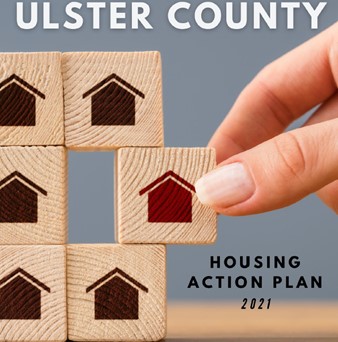
The Ulster County 2021 Housing Action Plan (HAP) was released on March 4 and shows how residents of Ulster County were starkly burdened by the pandemic’s economic impact.
The housing crisis in Ulster County is not new. Since 2010, rent has increased by 16% and the median income of renters decreased by 1%, and incomes in homes have remained stagnant while spending power decreased excluding the highest-earning households in the county. From 2013 to 2019 the average price of a single-family home increased by 17%. Additionally, during the 2018-2019 school year 576 county students experienced homelessness and in January 2020, 438 people were identified as homeless. This crisis had simply been worsened by the pandemic.
“We release this Housing Action Plan as 12 months of the pandemic have starkly revealed just how hard so many in our community are struggling to make ends meet – especially with ever-increasing housing costs,” said Ulster County Executive Pat Ryan in the report. “This report makes clear that our housing market was in crisis even before the pandemic. It carefully examines the data and lays out the steps we need to take to address it.”
The report raised the fact that over the past 20 years previous housing reports and studies pointed to a lack of affordable housing.
To combat the ongoing housing crisis, the report recommended the county form a Housing Task Force, collaborate with developers for vacant site redevelopment, increase transitional housing to “break the cycle of homelessness,” create a Housing Smart Communities Initiative so Ulster County can receive certification as a Housing Smart Community and establish housing funds in Ulster County.
“No single policy can meet the housing needs of Ulster County on its own. This HAP provides recommendations for a mix of local and county policies,” according to the report. “These actions are necessary to address the full scope of housing demand and these policies must account for unique housing conditions that vary from municipality to municipality.”
The report also noted that certain demographics are impacted by the housing and affordability crisis more compared to other residents.
The HAP identified that the county population is getting older so there is a need for more senior housing.
“Our seniors need to be able to age in the communities they’ve called home for decades and our young people need to be able to stay and raise their own families here,” according to the press release.
Additionally, renters appear to be more impacted compared to homeowners.
Renters disproportionately have lower wages compared to homeowners and 30% of Ulster County renters spend more than half of their paycheck on housing costs compared to 13% of homeowners.
Out of 2,288 total housing units in the Village of New Paltz, 73% are occupied by renters and 27% are occupied by homeowners.
Certain municipal governments in Ulster County have taken steps towards affordable housing.
New Paltz is one of the municipal governments that have taken action. The New Paltz Affordable Housing Law requires there to be an affordable housing board and affordable housing in new developments with more than 10 units. Additionally, the Landlord Tenant Relations Council works to mediate situations with landlords and tenants.

